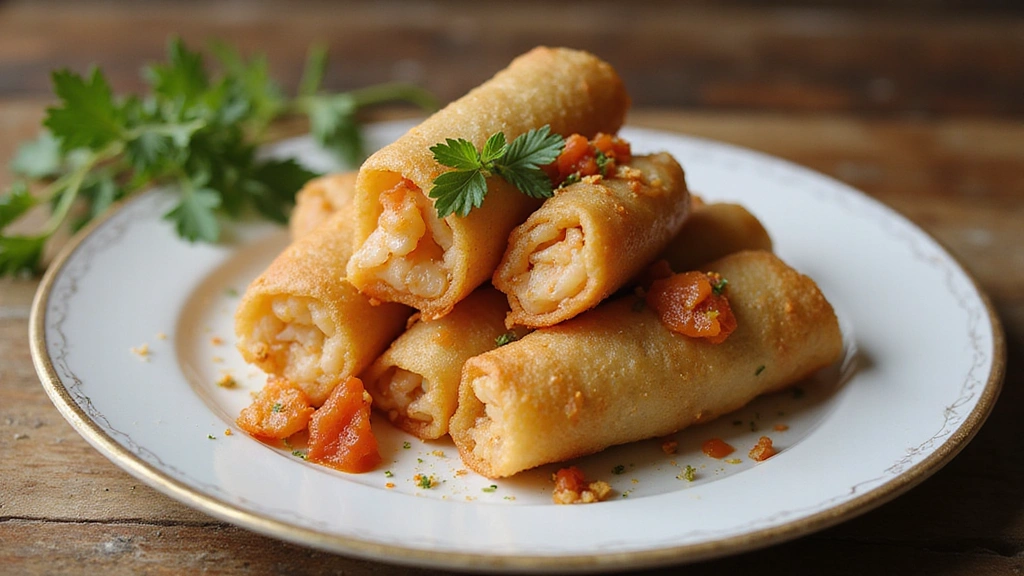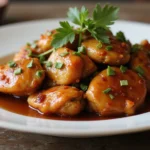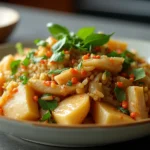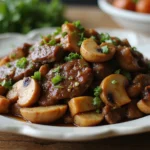This classic Chinese Shrimp Egg Roll brings together centuries of culinary tradition with modern techniques to create a dish that’s both comforting and elegant.
The harmonious balance of crispy wrappers and savory shrimp filling creates a memorable dining experience that will have everyone asking for your secret.
I discovered this recipe during my travels through the bustling streets of Shanghai, where local chefs have perfected it through generations of careful refinement.
Whether you’re preparing a casual family dinner or hosting a special celebration, this Chinese Shrimp Egg Roll delivers impressive results with straightforward preparation.
The History and Cultural Significance
• Chinese Shrimp Egg Roll traces its origins to the 19th century in Southern China, where it was originally created as a way to use leftover ingredients.
• The dish evolved over decades as Chinese immigrants adapted the recipe to suit American tastes, eventually becoming the beloved version we know today.
• In Chinese culture, egg rolls traditionally appear at celebrations like Lunar New Year, symbolizing wealth and prosperity due to their resemblance to gold bars.
• While many variations exist across different regions, the authentic version maintains a thin, crispy wrapper that sets it apart from imitations.
Recipe Overview
Nutritional Information (per serving)
Ingredients
Essential Equipment Guide
Deep Fryer: This tool is essential for achieving the perfect crispy texture in your egg rolls. While you could use a pot for frying, a deep fryer ensures consistent temperature control and even cooking. Look for one with a temperature gauge for precise frying.
Mixing Bowl: A large mixing bowl is crucial for combining your shrimp and vegetable filling thoroughly. Alternatives like a food processor can chop ingredients but won’t mix them as well. Choose a bowl that allows enough space for mixing without spilling.
Rolling Mat: A silicone rolling mat can help you roll the egg rolls tightly and evenly. If you don’t have one, a clean countertop can work as well. Ensure the surface is dry to prevent sticking.
Preparation Methods
Chopping Shrimp: Finely chop the shrimp into small, uniform pieces to ensure even cooking and easy filling. This technique allows the shrimp to meld seamlessly with the vegetables, enhancing the overall texture. Use a sharp knife for clean cuts, and be cautious of cross-contamination.
Filling Preparation: Combine the shrimp with vegetables and seasonings in a mixing bowl for a balanced flavor. Make sure to mix thoroughly to distribute the flavors evenly. This step is crucial for ensuring that each bite is flavorful.
Rolling Egg Rolls: Lay the wrapper with a corner pointing towards you, place filling in the center, and roll tightly while tucking in the sides. This technique helps prevent the filling from spilling out during frying. Practice makes perfect, so don’t hesitate to experiment with how tightly you roll.
Step 1: Prepare Ingredients
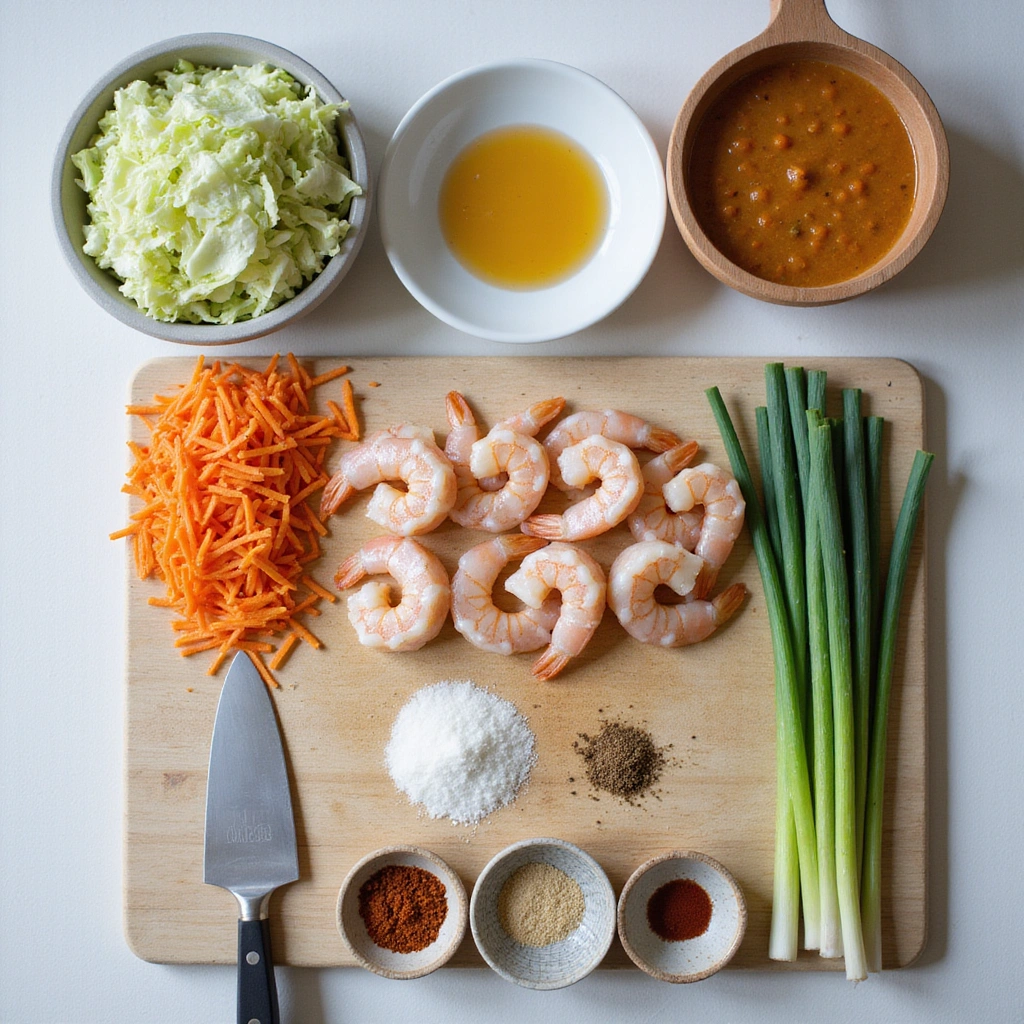
Gather all your ingredients and tools before starting.
Ensure your shrimp are peeled, deveined, and chopped into small pieces.
Wash and finely shred the cabbage, grate the carrots, and slice the green onions.
Having everything ready will streamline the cooking process.
Step 2: Make the Filling

In a large mixing bowl, combine the chopped shrimp, shredded cabbage, grated carrots, and sliced green onions.
Add soy sauce, ginger, and garlic to the mixture for flavor.
Mix everything thoroughly until well incorporated, ensuring even distribution of flavors.
Taste a small amount and adjust seasonings if necessary.
Step 3: Roll the Egg Rolls

Take an egg roll wrapper and lay it on a clean surface with a corner pointing towards you.
Place about 2 tablespoons of the filling in the center of the wrapper.
Fold the bottom corner over the filling, then tuck in the sides tightly and roll away from you.
Seal the edge with a bit of water to ensure they don’t open during frying.
Step 4: Heat the Oil
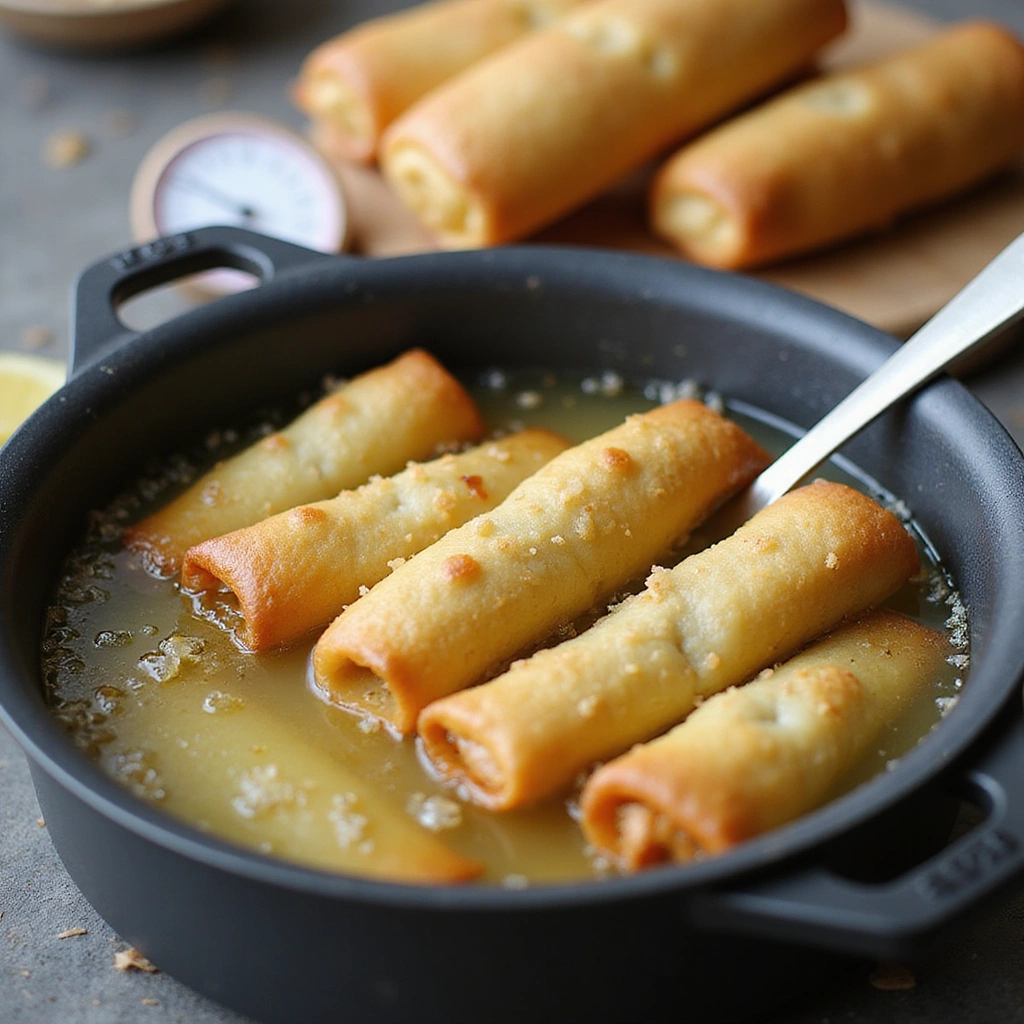
In a deep fryer or large pot, heat the vegetable oil to 350°F (175°C).
Use a thermometer to ensure the oil reaches the right temperature for frying.
If the oil is too cool, the egg rolls will absorb more oil and become greasy.
If it’s too hot, they will burn on the outside before cooking through.
Step 5: Fry the Egg Rolls
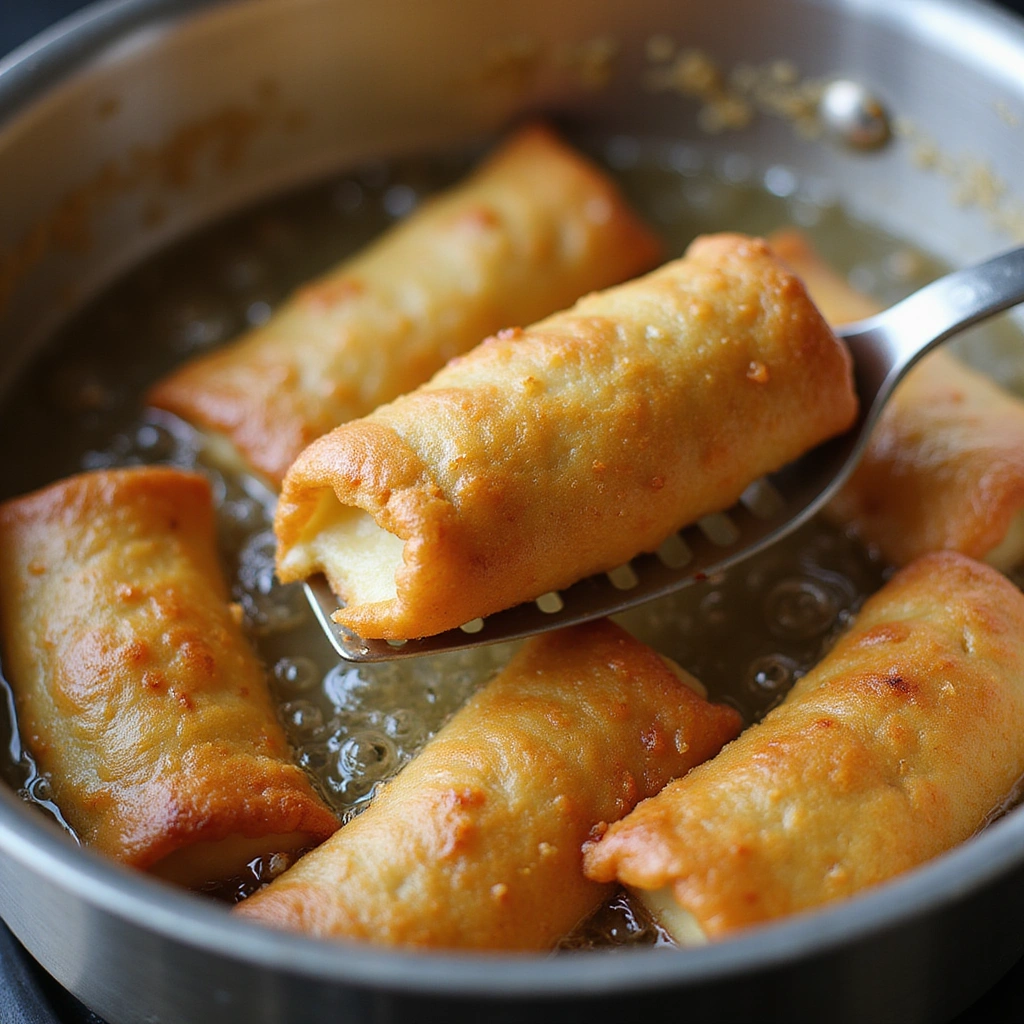
Carefully place a few egg rolls in the hot oil, avoiding overcrowding the pot.
Fry them for about 3-4 minutes or until they turn golden brown and crispy.
Use a slotted spoon to turn them halfway through for even cooking.
Once done, remove them and place them on paper towels to drain excess oil.
Step 6: Serve and Enjoy

Arrange the fried egg rolls on a serving platter with dipping sauce on the side.
Garnish with fresh cilantro or sliced scallions for a touch of color.
Serve them hot for the best texture and flavor.
Enjoy your homemade crispy shrimp egg rolls with friends and family.
Critical Timing and Temperature Guide
Oil Heating: Heat the oil to exactly 350°F (175°C) for optimal frying. This ensures the egg rolls become crispy without absorbing too much oil. Use a thermometer for accuracy, and avoid the common mistake of frying at too low a temperature.
Frying Time: Each batch should take about 3-4 minutes. Watch for a golden brown color as an indicator of doneness. Overcrowding the pot can lead to uneven cooking, so fry in small batches.
Cooling: Allow fried egg rolls to drain on paper towels for at least 2 minutes before serving. This helps remove excess oil and keeps them crispy longer.
Pro Tips for Chinese Shrimp Egg Roll Recipe Homemade And Crispy
• Ingredient Selection: Choose the freshest shrimp available, as they make a significant difference in flavor and texture.
• Preparation Secret: Let your filling mixture sit for 15 minutes to allow flavors to meld before rolling.
• Temperature Management: Ensure your oil is at the correct frying temperature to achieve a crispy exterior and tender interior.
• Texture Enhancement: Use a mix of cabbage and carrots for a crunchy filling that contrasts nicely with the crispy wrapper.
• Flavor Layering: Add a splash of sesame oil to the filling for a nutty flavor that enhances the dish.
• Make-Ahead Strategies: Prepare and freeze un-fried egg rolls for up to a month; fry them straight from the freezer.
• Restaurant-Quality Finishing Touches: Serve with homemade sweet and sour sauce for an authentic touch.
• Equipment Optimization: Use a cast iron pot for better heat retention when frying.
Troubleshooting Common Issues
• Filling Leaks Out: This usually occurs if the egg rolls are not sealed properly. Ensure you wet the edges of the wrapper before sealing. If they still leak, consider using less filling.
• Egg Rolls Too Greasy: If your egg rolls are greasy, the oil may not have been hot enough. Always check the temperature before frying. Drain them well on paper towels after frying.
• Wrappers Too Tough: If the wrappers are tough, they may have been overcooked or not stored properly. Use fresh wrappers and avoid frying them for too long.
• Filling Too Dry: If the filling lacks moisture, add a touch of soy sauce or sesame oil before mixing to enhance flavor and moisture.
• Uneven Cooking: This happens when too many egg rolls are added to the oil at once. Fry in small batches for even results.
Variations and Regional Differences
• Cantonese Style: Often includes ingredients like bean sprouts and mushrooms, providing a different texture and flavor profile.
• Sichuan Style: Has a spicy kick, often incorporating chili oil or Sichuan peppercorns for heat and complexity.
• Vegetarian Option: Replace shrimp with tofu or a variety of vegetables, such as mushrooms and bell peppers, for a meatless version.
• Modern Interpretations: Some contemporary recipes use baked wrappers or air fryers for a healthier take while still aiming for crispiness.
Food Science Behind the Recipe
• Maillard Reaction: This chemical reaction between amino acids and reducing sugars gives the egg rolls their golden color and complex flavor as they fry. Understanding this helps you achieve the perfect crispy exterior.
• Osmosis: The filling ingredients can release moisture into the wrappers, so it’s essential to balance wet and dry ingredients. This prevents the wrappers from becoming soggy.
• Hydration of Wrappers: Proper hydration of the egg roll wrappers before sealing helps create a strong bond, preventing leaks during frying.
Frequently Asked Questions
What’s the most common mistake people make when preparing Chinese Shrimp Egg Rolls? The most common mistake is not sealing the egg rolls properly, which can lead to leaking filling during frying. Be sure to moisten the edges before sealing for a secure closure.
Can I prepare components of this dish in advance? Yes, you can prepare the filling and even roll the egg rolls a few hours ahead. Store them covered in the refrigerator until ready to fry.
How do I adapt this recipe for dietary restrictions? To make it gluten-free, use rice paper wraps instead of egg roll wrappers and ensure your soy sauce is gluten-free.
What’s the best way to store and reheat leftovers? Store leftovers in an airtight container in the refrigerator for up to 3 days. Reheat in an oven at 350°F (175°C) for about 10 minutes to revive their crispiness.
Can I freeze this dish? Yes, freeze un-fried egg rolls in a single layer on a baking sheet before transferring them to a freezer bag. They can be fried directly from frozen.
What wine or beverages pair best with this dish? A light white wine like Riesling or a crisp lager complements the flavors of the shrimp and enhances the overall dining experience.
How can I scale this recipe up for a crowd? Simply multiply the ingredients by the number of servings needed, but consider frying in batches to maintain temperature and quality.
What side dishes complement this recipe best? Fried rice or a refreshing Asian slaw make excellent accompaniments to balance the richness of the egg rolls.
How do professional chefs elevate this dish for restaurant service? They often serve egg rolls with a variety of dipping sauces like chili sauce, hoisin, or a homemade sweet and sour sauce for an upscale touch.
Serving and Presentation Guide
• Traditional Presentation: Serve egg rolls on a wooden or bamboo platter lined with parchment paper, accompanied by small bowls of dipping sauces. This presentation highlights authenticity and tradition.
• Modern Plating Ideas: Stack the egg rolls at an angle on a white plate for a sleek, contemporary look, garnished with microgreens for a pop of color.
• Accompaniment Suggestions: Pair with sweet and sour sauce, soy sauce, or a spicy chili sauce to enhance the flavor experience.
• Special Occasion Presentation: For celebrations, consider serving egg rolls in a tiered serving dish or with decorative toothpicks for easy eating.
Conclusion
I hope you enjoy making these Chinese Shrimp Egg Rolls as much as I do.
They’re a perfect way to bring a taste of authentic Chinese cuisine into your home.
Try this recipe for your next gathering, and watch how quickly they disappear!

